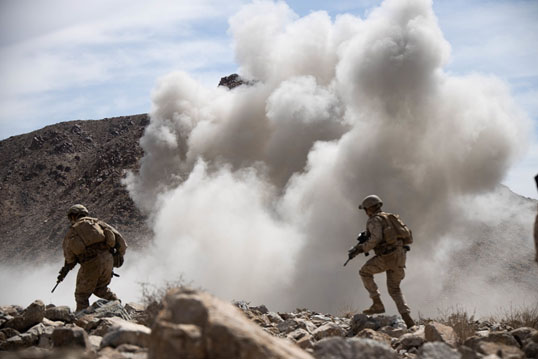The association of multiple mild traumatic brain injuries, longer periods of alteration to consciousness, and sub-concussive exposure with headache outcomes.
Many risk factors that contribute to the complex clinical traumatic brain injury (TBI) profile of Veterans. The current literature has drawn implications regarding the role these risk factors play in post-traumatic headache (PTH) prevalence and severity. However, measuring the extent to which these various risk factors influence TBI-like symptoms, specifically PTH, remains unknown.
A team of researchers conducted a retrospective, cross-sectional study on Operation Iraqi Freedom/Operation Enduring Freedom/Operation New Dawn (OIF/OEF/OND) Veterans (n = 405) to compare PTH symptomology across TBI severity, frequency, and variables contributing to injury (e.g., mechanism of injury, loss of consciousness, alteration to consciousness, post-traumatic amnesia, personal protective equipment [PPE]). They conducted a series of multiple regression and categorical data analyses across the cohort's demographic characteristics and found a direct relationship between TBI severity, frequency, and injury variables and headache occurrence.
Even though blast exposure was the most common mechanism of injury, there were no headache outcome differences between blast and non-blast injuries. However, greater headache severity was reported in Veterans with both primary and tertiary blast effects. Additional findings indicated increased headache severity being reported by Veterans with mild and moderate TBI compared to those with subconcussive exposure. In addition, a reported history of cumulative mild TBIs was associated with more severe headaches and migraine-like symptoms over time. The use of PPE was associated with less severe headaches and less likelihood of experiencing migraine-like symptoms.
Persistent PTH remains to be associated with higher rates of disability, health care and societal costs, and poorer health outcomes in Veterans. Current diagnosis-based treatments may exclude Veterans with subconcussive exposure from more appropriate and advantageous treatment options. Hence, focusing on a symptom-based approach to treatment may be more beneficial for Veterans who report concussive-like symptoms without a formal diagnosis. In addition, early TBI/PTH intervention may be protective against headache outcomes and thus should be considered when developing headache management plans for Veterans.

Coffman, C., Reyes, D., Hess, M. C., Giakas, A. M., Thiam, M., Sico, J. J., Seng, E., Renthal, W., Rhoades, C., Cai, G., & Androulakis, X. M. (2022). Relationship between headache characteristics and a remote history of TBI in veterans: A 10-year retrospective chart review. Neurology, 99(2), e187–e198.
This work was supported by the VA Headache Center of Excellence Program.
Your 15 minute session will timeout in approximately 10 minutes.
If you're in the middle of entering information, please close this warning and save your progress (if possible) or finish up your task.
If your session fully times out, you will lose any un-saved work.
Your current Blast Injury Research Program session has expired.
Your next click will take you away from the private area, and you will lose any work you have in-progress.
Please enter your email address, and try again.